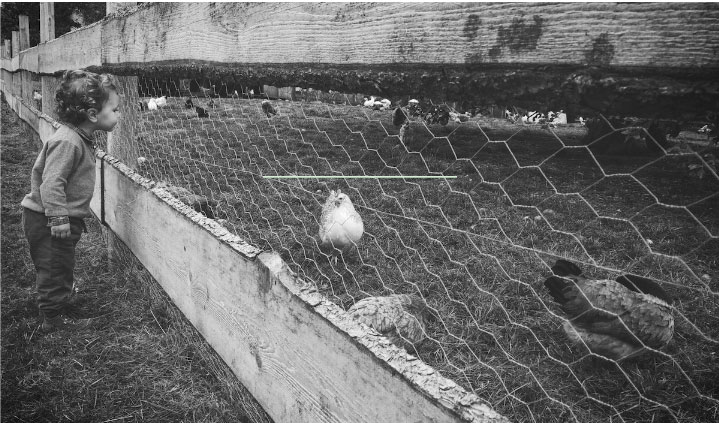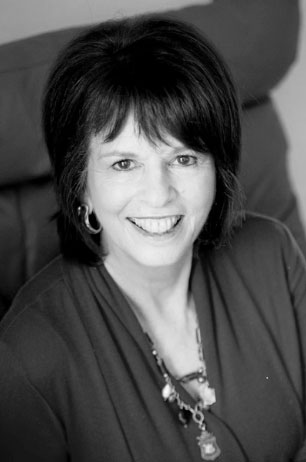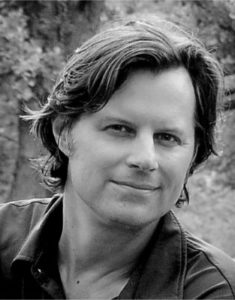News and Tools for
Happiness, Love, and Wisdom
volume 12.1 • 2018
In This Issue
Mindfulness and Psychotherapy: Deepening the Conversation
© 2017 Marjorie Schuman, PhD
Hokusai says look carefully.
He says pay attention, notice.
He says to keep looking, stay curious.
He says there is no end to seeing
Introduction
Both psychotherapy and Buddhist mindfulness meditation have the purpose of helping us to get to know our own minds. The shared core of these two modalities of introspection is the ability to notice and be with what is; to be intimate with the present moment of experience. Despite this core similarity, however, Buddhist meditation and psychotherapy are also distinct from each other in significant ways, including differences in purpose, process and practice.
My book, Mindfulness-Informed Relational Psychotherapy and Psychoanalysis: Inquiring Deeply (abbreviated in this essay as “INQUIRING DEEPLY”) is a series of reflections on mindful awareness in Buddhist practice and psychotherapy. It addresses the following basic questions:
- What are the essential similarities and differences between Buddhism and psychotherapy?
- Is Buddhist practice itself a form of psychotherapy?
- Can mindfulness practice help bring psychodynamic efforts to fruition? And, if so, how?
The underlying purpose in the book is to elucidate how mindfulness in dharma practice and mindfulness-informed psychotherapy can be integrated into a single coherent frame.
In addition, INQUIRING DEEPLY also asks these pragmatic questions:
- What is a wise relationship to problems?
- What are the elements of a skillful means of “being with” problems?
& - How can someone best “practice with” problems, in the dharmic sense of practice?
It became apparent to me that this skillful means could not be looking for something; it needed to be looking deeply into something. So the central question in INQUIRING DEEPLY became the following:
- How can we look deeply into problems in a way that breathes space into them, decodes their hidden meanings, and allows them to resolve?
The point of view in INQUIRING DEEPLY is that it is possible to engage an integrated and unfolding path of deepening insight which can, alternatively, be conceptualized as mindfulness- informed psychotherapy and/or as psychologically-informed dharma practice. The book is a guide to understanding this path; an overview of how people change.
In this article, excerpts from the book have been selected, grouped, and woven together into several discussions under the headings that follow.

Inquiring Deeply Defined
Inquiring Deeply can be defined most simply as a blended psychotherapeutic approach which integrates mindfulness with psychotherapeutic technique, one which is intended to engage the client/ patient at the levels of narrative, regulation of affect, and psychodynamic understanding. Its fundamental elements are mindful awareness, self-reflection, and deep connection.
Greetings
The Wise Brain Bulletin offers skillful means from brain science and contemplative practice – to nurture your brain for the benefit of yourself and everyone you touch.
The Bulletin is offered freely, and you are welcome to share it with others. Past issues are posted at http://www.wisebrain.org/tools/wise-brain-bulletin.
Rick Hanson, PhD, edits the Bulletin. Michelle Keane is its managing editor, and it’s designed and laid out by the design team at Content Strategy Online.
To subscribe, go to http://www.wisebrain.org/tools/wise-brain-bulletin.
There are certain key differences between Buddhist “mindfulness of mind” and mindful self- reflection in psychotherapy. The primary difference concerns what we are asked to be mindful of. Psychologically-focused self-reflective awareness, which I call “Inquiring Deeply,” places emphasis on the psychological world of lived experience; the personal autobiographical space of the mind. In contrast, Buddhist mindfulness of mind - the third foundation of mindfulness - is inclusive of what we are conscious of, as well as of the subjective qualities of that consciousness, but its emphasis is on universal and impersonal attributes of human experience. It brings mindful attention to how the mind relates to and gets entangled with the world which it creates; its tendencies to grasp after, push away, and go unconscious to experience; its ignorance of important truths.
As is widely understood in the mental health professions, but not always in Buddhist circles, the mind is inherently relational. This fact explains why the issues which are most often problematic for people are emotional/ interpersonal in nature: they are embedded in unseen relational patterns. The most essential premise in this approach is that emotional well-being is a function of the quality of our connections with others. Inquiring Deeply explores inner experience hrough this thematic lens, looking into the way interpersonal experience is structured and the developmental factors which have contributed to making it that way.
I want to emphasize that Inquiring Deeply is not a new “brand” of psychotherapy. It is not something the therapist does as a clinical intervention; it’s not something the therapist teaches the patient (I refer to the people I work with as “patients” rather than “clients” in accordance with the psychoanalytic clinical model) nor is it something done by the patient under the direction of the therapist. It is, rather, a paradigm for psychodynamic understanding, which is conceptually informed by Buddhist psychology and contemporary psychoanalysis, and experientially informed by mindfulness practice. It is based on the strategic use of Buddhist methods of practice (mindfulness, investigation, and inquiry) to amplify and ‘unpack’ psychological experience.

The method of inquiry can be most simply defined as looking into the nature of something in a deliberately open and receptive state of mind in order to allow something new to be discovered. As I use the term, inquiry is a deliberate, strategic, and sustained process of “living in the question” of something, in contrast to “investigation,” which is the probing of experience as it arises. Finding the right questions is the art of inquiry, and is itself a process; questions become progressively more refined and clear as we be with them over time. Once a question has been posed, the major task is simply to keep questioning and looking, sustaining an attitude of curiosity and receptiveness.
(When inquiry is done as a formal meditation process, it can also be called “contemplative inquiry.”)
The optimal state of mind in inquiry is aptly described as “opening the hand of thought.” K. Uchiyama (2004) used this phrase to describe Zen meditation, but it is a good description of the optimal mental state for inquiry as well. This is a state of mind which is open and receptive, one which neither holds onto nor pushes away thoughts. It rests on a platform of mindful attention. This quality of mind invites an experience of not knowing, which can be both creative and generative.
I liken the process of inquiry to an extended conversation that takes place between someone and the “external world” simultaneously. For me, the typical sequence is generally something like this: first, a question arises in my mind. Sometimes this begins with a word or a phrase that starts to echo in my thoughts. Then, generally within a day or two, I find that something - just the ‘right’ something - emerges: an insight; a comment someone makes as we are speaking together ; or something that comes up in a therapy session with a patient. In the mystery of unconscious process, it feels as though life itself is alive and responsive to my inquiry; that answers are generated from (called forth by?) my intention to ‘answer’ a particular question.
Inquiring Deeply has the aim of transforming and reorganizing the patient’s self-experience. The process of inquiry can be directed in two ways: through mindful self-reflection, and/or in dialogue with a mindful therapist. This amounts to a creative synthesis of mindfulness meditation and psychodynamic/relational psychotherapy in which someone can discover their own deepest, subjective truths. (INQUIRING DEEPLY includes many clinical examples.)
The Relational Nature of Suffering
Sensitivity and reactivity to other people - to what they say and do (or what they don’t say or don’t do) - dominates much of our experience. Relationships with significant others throughout the life span are the primary regulators of our emotional equilibrium, as well as emotional (and physical!) health. To feel affirmed, accepted, and loved is the basic impetus behind psychological development. The pain of feeling separate, insufficiently appreciated and understood, unworthy, or unloved lies at the experience of most suffering. Relational trauma lies at the core of most psychological wounds.
For this reason, having a clear understanding of relational issues is at the heart of Inquiring Deeply. When we begin by exploring the upsets that occur between ourselves and others, we can systematically cultivate self-reflective awareness, with the goal of deepening our emotional understanding of our own patterns of attachment and of the interpersonal dynamics that get generated between ourselves and others. At another layer of the same inquiry, we can begin to discern the dharmic predicaments that come into play in relationships as a result of our grasping for what we want, our aversion to what we don’t like, and our personal unconsciousness of ourselves.
Although relational suffering is not acknowledged as such in the teachings of Buddhism, it is readily understood within the Buddhist concept of “dukkha” - the primary unsatisfactoriness that permeates our experience as human beings. As we dig down into relational dukkha, what we find there is always the same: in simple terms, not having what we want from others and/or not wanting what we do have.
This fundamental Buddhist reality does not, however, directly address the psychological complexities. Relational dukkha is held in place by layers of psychological meaning. Perhaps this point may be understood by analogy with physics: Buddhism brilliantly illuminates the basic atomic structure of suffering but does not much concern itself with the molecular

configurations in which suffering presents itself. Buddhist psychology highlights the universal core elements in suffering - grasping, aversion, and ignorance - but it does not concern itself directly with the matrix of psychological factors which organize those core experiences into meaning. It does not delve into the dukkha of our relational entanglements.
Inquiring Deeply fills in some of this territory by investigating the narrative as well as enacted meanings that organize our relational lives. By inquiring deeply into the upsets that occur for us in relationship, it becomes possible to begin to understand what is wounded, missing, or dysfunctional in us. Because psychological wounds are fundamentally relational wounds, relationship is also a natural path of healing. Deep emotional understanding of developmental psychological wounds, such as childhood trauma and neglect, and recognition of their impact on present-day life, lays the groundwork for healing in psychotherapy.
While psychological healing is not the same as the “end of suffering” taught by the Buddha, the view in INQUIRING DEEPLY is that mindful awareness can be brought to bear on both. In mindfulness-informed psychotherapy, awareness is focused on experience as it unfolds from moment to moment, including especially mindfulness of connection. This results in a deepening of emotional understanding grounded in embodied experience, the felt sense of things. In addition, the accurate empathy and wisdom of the mindful psychotherapist provides corrective experience of intimacy in the therapeutic relationship. The deep inquiry generated in the therapeutic dialogue allows complex psychological issues of relationship to be explored in a way that honors the wisdom and methods of dharma practice.
The Importance of Storyteller Mind
In Inquiring Deeply, special emphasis is placed on the importance of psychological narrative or “storyteller mind” because narratives reveal so much of the way we see ourselves and others. The stories in our minds may be fundamentally empty of substance, as Buddhism teaches, but they encode subjective experience and create meaning in the psyche. So in an important sense, it is not possible to simply let go of, transcend, or “wake up” from them. As the writer David Loy says, we are made of stories!
While narratives can serve a variety of functions, generally speaking they make sense of what has happened to us and comprise a blueprint in the mind for what we can expect in the future. In this way, they create the structure we live by. For good or for ill, the stories in our minds become one of the principal influences on the way our lives unfold.
One example given in INQUIRING DEEPLY is that of a man I worked with, “Victor,” who had grown up on a farm. An emblematic childhood story he told was about a family gathering that had occurred when he was about three years old. As Victor remembered it, an aggressive chicken had chased him around the yard while the family stood around laughing. To Victor, this childhood incident perfectly encapsulated his sense of being a loser and a laughing stock. An unexpected twist in this psychological plot occurred when an old home movie re-surfaced in which this event had been recorded on film. As it turned out, it was not the chicken which had been chasing Victor, but the other way around! Moreover, the family did not appear to have been laughing at him; they were simply laughing. It was disconcerting (though therapeutic) for Victor to discover that this formative event had not happened the way he remembered it.
Putting aside for now how “self” is defined by the stories we tell, present-moment reactivity is always embedded both in our psychological history and a particular narrative context. So narratives illuminate the sources of our emotional reactivity. The telling and re-casting of our stories is an essential part of the process of psychological healing.
Re-constructing the narratives we live by and articulating what may previously have been unformulated is the work of psychotherapy. It is especially useful to be aware of storyteller

mind with respect to the way that problems are constellated. This connects to the basic Buddhist idea that it’s never the problem that causes suffering; it’s how we think about a problem - the narrative in which the problem is embedded - that creates suffering.
Rather than aspiring to solve this predicament by simply changing the stories we live in, the approach in Inquiring Deeply is to examine the content as well as the process of story-making mind. This framework of understanding recognizes our tendency to get caught up in (identified with) the stories of the mind. It also invites us to probe the truth of what we believe, and to examine the ways that narrative keeps us stuck in unnecessarily narrow views of self and other.
Part of the essential function of psychotherapy is re-constructing the narratives we live by. In my experience, being attentively receptive to the story-telling mind and inquiring deeply into both the content and process of our narratives often leads to increasingly subtle truths and insights. It can help us to achieve deeper contact with what is true for us personally and to anchor our experience, thoughts, and beliefs in our own wisdom.
Practicing with Problems
INQUIRING DEEPLY grew out of my compelling personal desire to understand how to blend dharma practice and relational psychotherapy into an integrative approach to working with psychological problems. I knew intuitively that there was wisdom in problems and opportunities for growth contained within them. I loved the Buddhist metaphor of the lotus flower with its roots in the mud growing towards the sunlight, and I could see for myself that problems always seemed to point exactly where I needed to look and reveal what I most needed to see. Early on in my meditation practice, I recognized the profound truth that this very moment is the perfect teacher, as Buddhist teacher Pema Chodron famously said.
I also knew from my work as a relational psychoanalyst that problems have many layers, and that the meaning we assign to them is a very powerful catalyst in how they resolve (or don’t). At the core of problems, there is often some rejecting attitude towards the problem itself and/or towards some aspect of one’s experience. Indeed, the essential meaning of “problem” is that there is a circumstance or situation which one regards as unwelcome and needing to be dealt with or overcome. Sometimes we hold the view that problems are a punishment for something we have done, or failed to do; something in ourselves we deem blameworthy or shameworthy.

Beyond the particular circumstances, there often seems to be an embedded view that having problems is itself a problem; as if life could be without problems, or that having problems were an indication of deficiency or failure.
I could see that finding an effective frame in which to hold problems, a “right view” in Buddhist terms, plays an important role in someone’s ability to find a path through their suffering; (And, it was clear that most often there is no way out of the swamp except through the alligators!)
To anticipate one of the major points in INQUIRING DEEPLY, problems have a function in psychological life quite like the role of pain in the body: they draw our attention to particular frictions, conflicts, and areas of dysfunction in our minds. Problems coalesce where we are stuck, and they invariably seem to point exactly where we need to look. One of the conclusions we can draw is that problems serve an important psychological function. Inquiring into problems is one way to discover what areas of psychological function are most in need of personal (and clinical) attention.
In this important way, problems are also opportunities. In the words of the anthropologist Margaret Mead, “we are continually faced with great opportunities which are brilliantly disguised as unsolvable problems.” It is certainly true that problems usually don’t feel like opportunities; problems feel painful. However, Mead’s quote goes to the heart of INQUIRING DEEPLY in the idea that there is a hidden surface in problems, a way to pay attention to them which can free us from at least some of their struggle and unpleasantness.
In distinction from the effort to figure it out, inquiry engages the effort to “drop into” a problem in a way that allows it to reveal itself. This reframes both attitude and view; instead of directing our effort toward making the problem go away, we redirect our wholehearted attention to deepening our experience of the problem. The immediate gain in this approach is the possibility of greater acceptance of problems; a way to use our own intuition as an inner compass which can help us navigate through the difficult terrain of a problem.
In summary, in the view expressed in INQUIRING DEEPLY, there is an innate intelligence in problems; a wisdom encoded within them that we can better access when we bring appropriate awareness and discernment to them. Over time and with open and receptive curiosity towards experience, intuitive awareness - the natural wisdom of the mind - uncovers the intelligence within problems.
The major importance of the way that we delineate our problems - how we define the leading edge and horizon of change - lies in the fact that they are part of the narrative structure within which life unfolds. If we use a problem as a guide to inquiring deeply into the structure of our experience, it will take us exactly where we need to go to discover important opportunities for change and healing.
Ultimately, of course, the great lesson is that life is a journey to be experienced, not a problem to be solved.
References
Hokusai Says. Roger Keyes, Providence Zen Center.
Loy, D. 2010. The World Is Made of Stories. Wisdom Publications, Somerville, MA
Uchiyama, K. 2004. Opening The Hand Of Thought. Wisdom Publications, Sommerville, MA.
About the author

Marjorie Schuman, PhD is a clinical psychologist and certified psychoanalyst with four decades of experience practicing Buddhist insight meditation in the Theravadan tradition. In 1995 she co-founded the Center for Mindfulness and Psychotherapy in Santa Monica where she taught a certificate program in Contemplative Relational Psychotherapy. A member of the faculty at the Los Angeles Institute and Society for Psychoanalytic Studies, Marjorie is the author of Mindfulness-Informed Relational Psychotherapy: Inquiring Deeply (Routledge Press, 2017). She is in private practice in Santa Barbara.
Oh Good, A Parade
© David Carnes
Like a parade of exotic animals
Feelings come to my door
They only leave a trace if I take them in and feed them.
Then it is up to me to follow with my shovel and broom and clean up after their passing.
Why can’t I just pet them and be done?
ABOUT THE AUTHOR

David Carnes is a long time meditator, musician, entrepreneur and writer. This poem is taken from a collection of poems chronicling his experiences during a period of intensive meditation practice. He lives and works in Minneapolis Minnesota where he serves as CEO for the digital agency, ArcStone. If you’re interested in reading the entire booklet of poems from which this one is taken, it is available freely as a downloadable PDF at http://www.spinningplates.com/2018/02/bright-pin.
When You Sign up for a Meditation Retreat, You Are Already On It
© Nina Asher, PhD
I wasn’t feeling particularly equanimous in my day-to-day life when I happened upon a retreat taught by two excellent teachers, conveniently located at a familiar center in northern California, and at a time when I could leave my psychotherapy practice for seven days.
My mind went through its usual tennis match of all the reasons why I wanted to go, coupled with the longer list as to why I didn’t. There were only two things holding me back: my relentless fear about leaving my familiar routine; and, my reluctance to do something that is exclusively for myself. With those thoughts in mind, I jumped in. What better time than the present to spend a week with myself investigating equanimity?
I thought about the coming retreat on a daily basis. I listened to talks by the retreat teachers. I pictured the rolling hills dotted with tiny violet and yellow wildflowers. I fantasized about what it would be like to have a roommate. Would the presence of another person distract me from myself?
And so the retreat began – two months before its actual start date. My mind was already preparing for what might happen, and how I would deal with it. Meditation has taught me that once anticipation becomes an actuality, one can find a way to be with whatever is, even if it’s uncomfortable.

Being in Silence
People who are not meditators often ponder how one can be quiet for so long especially when living with 80 other people. I respond, “Amidst silence, it’s possible to hear the noise in your mind with clarity, and within that, there are moments of quiet, sleepiness, fogginess and calm. The important thing is to be present with whatever is asking for attention.”
I thought back to past retreats, remembering that silence feels very strange in the abstract, but once in it, becomes an invisible, softly textured container for experience. My work as a therapist demands deep listening and reflective responding to others. A week of silence was a welcome break.
My fears centered not on silence, but on living for seven days without knowing what was happening in my absence. On other retreats I methodically checked the message board, heart pounding. Would this be the time I would find a note alerting me to an emergency at home? And if so, what would I do?
Silence doesn’t change a basic longing for things to stay the same, for loss to never happen. In this way, sitting a seven-day retreat is no different from living a life. There are no guarantees. In the quiet of retreat, fear peaks and subsides, only to circle back again
The Retreat Begins
This retreat began on a Sunday evening. I settled into a small but thankfully private room, found a spot in the sunlit meditation hall, and had a short walk around the grounds.
Wild turkeys pranced by the outdoor eating area as if they had been invited to dinner, while soundless deer roamed the hillsides. Camouflaged as they were, I was always surprised to see them. Bright orange California poppies open wide by day, folded their petals at dusk. The cool breeze reminded me that the ocean was nearby even if unseen.
I breathed quietly knowing this place well. The physical surroundings set the tone for the week: nature constantly changing, silent but exquisitely present. Like the hidden deer suddenly seen, on retreat, awareness of experience pops up seemingly out of nowhere.
We were not yet in silence during the first night’s dinner. I sat next to a young couple and a woman in her late 40’s, all on retreat for the first time. I became the “retreat expert,” as they barraged me with anxiety-ridden questions about what it is like to be silent for seven days.
The older woman asked if there was a line for the shower before the 6:00 am sitting. Feeling so experienced, I laughed answering, “No line. Why you won’t even know when people shower because they stay to themselves, taking care of personal upkeep at all times of the day or

The Wellspring Institute For Neuroscience and Contemplative Wisdom
The Institute is a 501c3 non-profit corporation, and it publishes the Wise Brain Bulletin . The Wellspring Institute gathers, organizes, and freely offers information and methods – supported by brain science and the contemplative disciplines – for greater happiness, love, effectiveness, and wisdom. For more information about the Institute, please go to http://www.wisebrain.org/wellspring-institute.
If you enjoy receiving the Wise Brain Bulletin, please consider making a tax-deductible donation to the Wellspring Institute. Simply visit WiseBrain.org and click on the Donate button. We thank you
evening.” I shared my first retreat experience of not knowing who lived on my floor until the end of the week, but being very aware of the color of the socks worn by the person meditating next to me.
The conversation continued
“Silence - well, it’s not as hard as it seems. The mind is so noisy in its internal dialogue, I barely missed the spoken word.” I remembered on other retreats my eyes became my voice as I had no need for verbal pleasantries. But I had a desperate curiosity about this strange task of slowing down and softening. I loved retreat but it wasn’t easy. A week of bliss was a fantasy.
Doubt Descends
I felt scared about this retreat although I barely showed it. I could feel myself “talking the talk,” as I was both there in the present, and outside myself at the same time. My system was unsettled. I picked at my food as tends to happen when I’m nervous; the ringing in my ears rose to a high-pitched shrillness; I had a headache. I wondered: am I more connected to anxiety than anything else? Is it my main organizing principle, even on retreat?
By 9:00 pm alone in my room, in silence, I sat on the edge of my bed and stared at my cell phone. I knew I needed to break all contact from my phone or I would be looking for it instead of experiencing searching. But separating from my phone was wrenching. Who would need me during the week and find me unreachable? Better yet, whom would I need and not be able to find?
I sat a bit longer, putting the phone in my suitcase, taking it out again. In one dramatic motion, I tossed it into my bag, quickly pushing it under my bed.
Heart pounding, thickness as I swallowed, I ached with a feeling of having lost a lifeline. I felt deep homesickness sweep through my body. I didn’t miss the phone but in its absence, I longed to go home.
Silence provides spaciousness in which one can see how the mind works. I have a long history or interest in this, but right then, I questioned what it was that drew me to retreats. I wondered, “Do I really like silence, or do loneliness, anxiety and homesickness overshadow all sense of calm? "My mind went further to ponder why I take on such difficult challenges anyway.
The homesickness stayed with me all week. It took the form of restlessness, longing, missing, and jitteriness. I noticed that the people I am closest to seemed vague in my mind. They were hazy, as were the thoughts of home. Like the wildflowers, their faces popped into view with sharp clarity, and then faded away just as quickly as they appeared.
I thought of my husband and daughter, and in brief moments, friends and patients. They appeared and disappeared into haziness. But the most persistent thought was worry that something frightening was happening elsewhere, and I wouldn’t know what it was until the retreat ended. I was braced in a stance of waiting.

This was a familiar yet uncomfortable feeling. However, I felt both vacant and full. I was delicately present with myself, as myself, on this retreat. Doubt, fear, and homesickness were all part of that.
Sleepy States
Sitting a long retreat allows one to experience many mind and body states. What seems intensely overwhelming in one moment, may, by the next, melt into calm. By day three, I was eating normally and my headache had dissipated. I was beginning to accept that I might be anxious and homesick much of the retreat. With that acceptance, I noticed many moments of light, clear breathing, and restfulness.

On retreat, and often when sitting at home, I have struggled to stay awake. One of my strengths is my astute ability to observe nuance and detail. Hyper-vigilance is the other side of this strength, and it is exhausting. Soon into most sittings, I became excessively drowsy, no matter how well I had slept or how straight I sat.
Insight meditation helps people become more awake in calmer states. Many teachers suggest standing up as a way to counteract sleepiness. But forcing myself to stay awake on retreat seemed contrary to what was most asking for my attention; that is, to rest when I needed to. Why would I want to stand up to jolt myself into wakefulness if my system was so clearly asking for rest?
On this retreat, I decided to stop struggling with sleepiness and rather I simply let myself be. I tried taking a nap in the afternoon but the minute I laid down on my bed I was alert, restless. My body could not settle. Given the same hour in the meditation hall, I was drowsy, mind cottony, eyes and body heavy longing for a rest.
I stopped trying so hard to wake up the more I noticed this pattern as simply “the way I meditated.” Either I was hyper-alert, my mind active with thoughts; or I was sleepy, kind of dreamy. I began to like these “resting sittings.” This was my way of receiving silence. Who was to say that I hadn’t entered deep meditative states, in sleepiness?
My Father Appears
On the 4th day, seemingly out of nowhere, I began to channel my father. Maybe I shouldn’t have been so surprised to see him alive in my mind, although like the tiny wildflowers, thoughts of him crept up on me. He too struggled with anxiety, fear, and sleepiness. I have always had a deep connection to him, but here on retreat I felt like we were one person.
I thought of him walking briskly down the street, hand in his pocket, fishing out a Rolaid every time his stomach grumbled. In that same pocket was a pill bottle holding small quantities of several kinds of medications. As I think back, they were likely pills for jittery gut or generalized anxiety.
I carried my own form of Rolaids along with microscopic bits of anti-anxiety medication. A strange contradiction: as anxiety peaked in the safety of retreat, I reached for something that could suppress what was arising. Wasn’t that exactly the opposite of what I wanted to do? But there I was, reaching for comfort in whatever way I could find it. The challenge was to accept rather than fight this truth.
My father and I were so much alike. Pockets filled with remedies, hidden from those who admired us. Better to drown in shameful feelings than to release them in exposed vulnerability. There I was, gripping onto anxiety as if it were a long lost friend, a connection to my father.
He was present again as I circled in and out of fear that I, or someone I love, would die. My father lived his life waiting to die. He read books about dying, and spoke matter-of-factly of its inevitability. In the face of illness, he quietly anticipated the worst, concurrently offering reassurance to those who needed it.
Perspectives on Self-Care
Be careful with all self-help methods (including those presented in this Bulletin ), which are no substitute for working with a licensed healthcare practitioner. People vary, and what works for someone else may not be a good fit for you. When you try something, start slowly and carefully, and stop immediately if it feels bad or makes things worse.
Death was the backdrop for my picture of living. Life was just something you endured until you died. Why get too invested in living if it would inevitably end? When my father was actually dying, he was clear, almost relieved. It was as if he was saying, “See, I was right, we really will die. Point proven.”

I too read books about living and dying trying, maybe as he did, to fathom what can’t be known even as it happens. In recent years, I have thought about my interest in dying as a way to help me live more fully. On this retreat, I shifted back and forth between my inclination towards the worst being just around the corner, to a quieter place of “I am here right now, it’s never too late, until it is, and yes, anything can happen at any time.”
My father followed me as I walked the hills, my pace even and direct, stopping when something caught my eye. I watched a lizard on a rock move in tiny increments as if its body were hands on a clock.
I touched the sense memory of him walking me as an infant up in the night, holding me close to his face, him humming the Brandenberg Concertos in my tiny ear. I could picture myself as a little girl, standing by his side of the bed waiting for him to awaken for the comfort I needed during the night. As the week progressed, I dipped deeper into our connection of love and stability; anxiety wasn’t our only area of commonality.
Epilogue
I spent hours with myself that week. I was ready to come home, but didn’t feel the excitement of returning as I had in the past. Upon returning from past retreats, I was bursting with things to share. I couldn’t wait to get caught up with what had happened in my absence.
This re-entry was quieter, more contemplative, almost private. As the weeks go by, I continue to feel the presence of the retreat inside me. Those changes are subtle but palpable.
I’ve discovered that it’s always disappointing to expect that retreat can be recreated in a life busy with doing. Rather, the residue of retreat reminds me of my commitment to living a kinder, less judgmental life. It helps me trust that I have what I need within reach, even in moments of despair or panic.
Insights, reflections, writing, dreams float into awareness as they gently turn into miniscule changes in how I live my life. Just as retreat begins in the moment you decide to sign up, so it lingers upon return, finding its place in life moving on, moment to moment.
ABOUT THE AUTHOR

Nina Asher, PhD is a clinical psychologist and child development specialist in practice in Los Angeles for over 35 years. In the past 15 years, she has been a practitioner of Vipassana meditation. She sees children, adolescents, parents, and individual adults for therapy, integrating psychodynamic/relational psychotherapy with insight meditation. She writes poems and personal essays about the therapy/meditation experience. You can reach her at drninaasher.com.
Skillful Means: Establishing safety, reducing fear
Your Skillful Means, sponsored by the Wellspring Institute, is designed to be a comprehensive resource for people interested in personal growth, overcoming inner obstacles, being helpful to others, and expanding consciousness. It includes instructions in everything from common psychological tools for dealing with negative self talk, to physical exercises for opening the body and clearing the mind, to meditation techniques for clarifying inner experience and connecting to deeper aspects of awareness, and much more.
Establishing Safety, Reducing Fear
Purpose/Effects
Research has demonstrated a link between situations fearful to the self (like being confronted with death) and a decrease in personal willpower. In order to optimize our mental and emotional capacity, we must feel safe. The following methods promote a sense of safety that allows our mental resources to stop fending off outer threats and instead focus on our inner wellbeing.
Method
Summary
Relax, meditate, and continually affirm your safety, while seeking help from others when necessary
Long Version
- Practice diaphragmatic breathing. By focusing your mental resources on your breath, you allow exterior threats to recede. Exercises that allow you to concentrate on the ebb and flow of your body often help to establish a sense of safety. This is because they center your attention on the internal and the personal rather than the external and interpersonal. You may want to try a full body awareness exercise if you find this helpful.
- Relax the body . When we feel afraid and vulnerable, we tense our muscles; you can think of it as trying to create a coat of armor or as preparing for a physical conflict. Our muscles hold this tension and promulgate a continued sense of insecurity. The decrease in muscle tension resulting from physical relaxation also helps move blood flow from the muscle to the heart and brain, promoting clear thinking and wellbeing. A progressive relaxation technique helps your body to “forget” the fear that your mind might have already cleared.
- Use a mantra or a statement that makes you feel peaceful and safe. You may want to select an affirmation using the method described here. One very powerful reminder comes from a folktale about King Solomon, in which this wise and great man is told that “this too shall pass.” Nothing in the human sphere is eternal. In the grand scheme of the universe, our minor fears and worries are ephemeral. If feeling threatened, remind yourself that “this too shall pass.”
- Meditate in a safe place. The Buddha received his enlightenment with the Bodhi tree at his back, guarding his vulnerable side. You don’t need a tree to sit under. When you meditate, become aware of your space and its consequences on your physical safety. If you’re indoors, consider the safety and seclusion that comes from doors and walls. If you’re outdoors on retreat, consider your isolation from the stresses of the “real world”. Treat your space as a sanctuary. You might want to use a basic relaxation meditation or posture meditation technique to enjoy the benefits of physical relaxation and meditative calm.
- Seek refuge in others. Whether you talk to a therapist or just talk to a trusted and understanding friend, we can’t live without expressing our fears. No man or woman is an island. If you feel ashamed of your fear, you might want to begin by journaling it and then using this insight to talk to another.
History
Much of the historical writing on meditation promotes establishing safety; Buddhist teachings often focus on helping the student separate her or his animal fear response from her or his mind, promoting a detached sense of impenetrability. Prayers in many different traditions act as a way of reducing fear by letting anxiety go into the hands of God.
Cautions
Don’t take this too far. Though the fear response can be detrimental to mental and physical wellbeing, it serves an obvious evolutionary purpose. When we feel unsafe, sometimes it ’s because we are unsafe. If a threat actually puts us at risk of real harm, we should listen to this fear and seek refuge using more permanent means.
Notes
Frank Herbert’s 1965 science fiction novel Dune contains a prayer called the Litany Against Fear, which is a powerful mantra against feelings of threat:
I must not fear.
Fear is the mind-killer.
Fear is the little-death that brings total obliteration.
I will face my fear.
I will permit it to pass over me and through me.
And when it has gone past I will turn the inner eye to see its path.
Where the fear has gone there will be nothing.
Only I will remain.
SEE ALSO
Transforming Anxiety
Self-Affirmation to Reduce Self-Control Failure - another method for repairing threats to the ego.
EXTERNAL LINKS
Brain science blog on reducing fear
Fare Well
May you and all beings be happy, loving, and wise.

